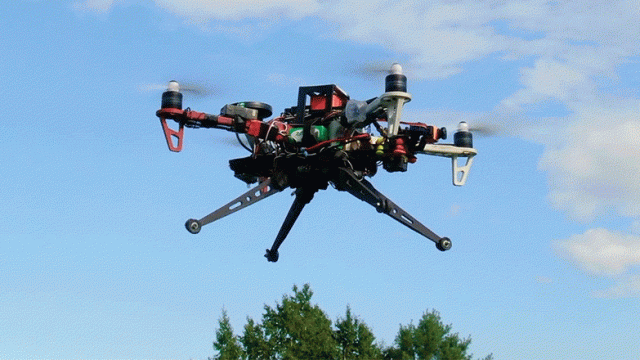Although most consumer-oriented drones are able to land themselves, their automated landing systems require a flat landing site, minimal winds, and low speeds to safely touch down. That’s not always available, so researchers have developed a new landing system that allows drones to land in rougher conditions, even on surfaces sloped as steep as 60-degrees.
It seems inevitable that, one day, the skies will be buzzing with thousands of drones delivering everything from fast food orders to prescription meds. But before that day arrives, these automated delivery systems are going to need robust failsafe systems. That’s especially true when it comes to finding safe places, away from people, when the need for an emergency landing arises. There are lots of risks to a drone simply touching down on the first flat open space it finds, but what if landing options weren’t so limited? What if a drone could land in the places where people fear to tread?

That’s part of the inspiration for a new landing system developed at the Université de Sherbrooke’s Createk Design Lab in Quebec, Canada. Most drone makers assume that landings will be performed in ideal conditions at optimal locations, and so rely on rigid landing gear that doesn’t provide enough friction to steady a drone on inclined surfaces. Current landing systems also tend not to provide enough flex to absorb the impact of of a drone coming in too fast, resulting in it bouncing off or taking considerable damage.
The solution the researchers at the Createk Design Lab came up with was two-fold, starting with equipping a drone with four landing legs that use friction-based shock absorbers to dissipate excess energy as the drone touches down. A small electric motor can actively increase the amount of friction at the moving hinge point where each leg connects to the drone, ensuring there’s no excess energy remaining that could cause the drone to bounce away.
The researchers’ other trick is similar to what large commercial airliners use to ensure a plane doesn’t overrun the runway during a landing: reversing the engines at touchdown. For the drone, reversing the direction its props are spinning creates a downforce that pushes it onto the surface where it’s landing to further minimise any bouncing or deflections, while increasing friction to bring it to a stop faster. In some cases, such as a rough landing on a surface with a severe 60-degree angle and at speeds of over 10 km/h, the reverse thrust can even prevent a drone from completely tipping over.
Few of us spend much time hanging out on the roofs of our homes. That also makes them an ideal place for drones to make emergency landings, because the risk of someone being up there at the same time is incredibly slim. But these newfound landing skills also mean a drone that is potentially running out of battery, or struggling with a mechanical issue, doesn’t need to spend as much time hunting for a safe and level landing spot, risking a very unsafe crash landing if it can’t find one in time. This approach greatly increases where a drone can safely and quickly touchdown.
